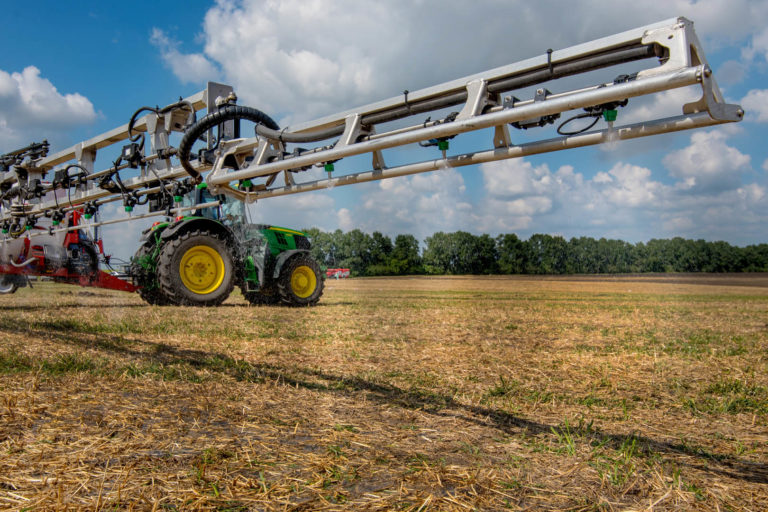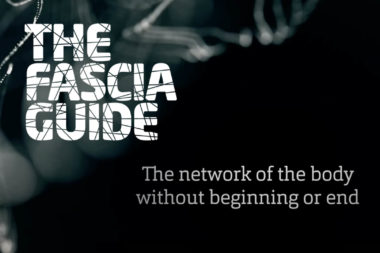

Stress and sugar harms fascia functions
Join the Fascia Conversation Today!
The food we eat, and other things we stuff into our bodies, such as alcohol, tobacco, sugar etc., also affects the feeling of ourselves and thus the fascia! Some food is more inflammatory, which also is individual how we can tolerate different things.
What we do know for sure is that the abundance of sugar (if we don’t burn it directly) has a negative effect on the fascia and makes it less elastic. High blood sugar levels damage the fascia and make it stiff.
Stress also affects the fascia in a disadvantageous way. Stress causes, among other things, high levels of the stress hormone cortisol in the body and cortisol in turn extracts sugar from the sugar repositories and thus increasing blood sugar levels.
A healthy body has a healthy fascia! For the fascia to be healthy, the viscoelastic gel has to flow without restriction, in all directions and the network of collagen fibers moves freely and does not impede the flow.
Then the body is in balance, homeostasis. The flow of nutrition and waste to and from cells, lymph and blood circulation work, communication between cells, the nervous system and all tissues in the body work. An obstruction in the flow gives an increased pressure where the “fluid is stationary”, which prevents tissue communication.
The composition of the extracellular matrix (ECM) is relatively stable in a healthy tissue. In the event of an injury and healing process, the composition of the ECM immediately changes. Specific components of ECM interact with cells to create the condition for healing, create inflammation, allowing new cells to easily move and heal the tissue. Sometimes the healing process does not stop but the inflammation becomes prolonged, it gets chronic. Why this sometimes happens is not quite clear yet.
- By Camilla Ranje Nordin, Teacher in Fascia & Fascia Treatment

Problems linked to Fascia
Why is it more common for women to have back pain?
More women than men suffer from back pain, sprains, ACL injuries, and similar conditions. How come?
Can you heal osteoarthritis?
The function of the articular cartilage is to reduce friction between the two articular cartilage surfaces and facilitate sliding when the joint moves, and to absorb the load when the joint is exposed to pressure, compression
Inflammation in Fascia causes pain – new discoveries presented in Stockholm
Dr Heike Jäger, Professor Karl Arfors and innovator Hans Bohlin presented the latest research regarding Fascia, inflammation and Fascia treatment in Stockholm, May 2017.
Are my problems related to Fascia?
Most of the questions we receive are about various issues and discomforts related to Fascia. How can Fascia represent a new way to treat and prevent problems?
Scar tissue
As the body builds scar tissue after damage to the skin, scar tissue build up in the Fascia inside the body when it is damaged. Therefore, we can get a chronic reduction in movement inside after an operation in which the Fascia is sewn together.
Oxidative stress – Is your body also rusting?
Oxidative stress – Is your body also rusting? Join the Fascia Conversation Today! Listen to the world’s number one Fascia podcast here Get the FREE Fascia Guide Method here Watch the celebrated Fascia documentary here As the cells in the body metabolize the food we eat and convert it into energy (ATP) in the mitochondria,…
What is back pain?
Explaining various forms of back pain such as Low back pain / Lumbar pain / Lumbago / Crick
Hypermobility
Hypermobile people build up enormous tension in their muscles that give painful tension in the joint, and they often get nerves pinched.
Is your Fascia acidic?
When the food we eat is metabolized, metabolites are formed. The metabolites can be acidic or alkaline, depending on what we eat.
Growing interest in Fascia treatment: “Fascia problems are often under diagnosed”
David Lesondak is a structural integrator and a myofascial specialist who has been working for many years trying to explain what fascia is, as well as the benefits you get from treating different problems with fascia treatment. In an interview at the Fascia Research Congress in Berlin 2018, he describes the basics of what fascia is and what challenges it is facing in the strive for recognition in the medical field.
Stress and sugar harms fascia functions
What we do know for sure is that the abundance of sugar has a negative effect on the fascia and makes it less elastic. Stress also affects the fascia in a disadvantageous way
Problems linked to Fascia
Fascia is a system of flexible connective tissue encapsulating everything in the body. If the system is running smoothly, all is fine, but when some parts become stiff, tense or inflamed, there will be consequences.
Hyper-extension
In places where the body has become stiff and numb the nervous system cannot signal the situation as quickly as it should so that we can control our movements.
What causes back pain?
New research shows that low back pain is caused by inflammation in the Fascia. But why are we getting low back pain and what happens in our body when we get back pain?
Straining – Lumbago
Lumbago follows the same pattern as hyper-extension. We usually have built up tension and stiffness that eventually impair the reaction of the nerves and muscles of the rigid area.
Is cancer fascia related? New insights presented in Boston 2015
New research leads to insights and by looking at the body in a completely new way we get new perspectives and explanations to symptoms and diseases. At the 2015 Joint Conference on Acupuncture, Oncology and Fascia in Boston, research was presented regarding Fascia and Cancer
Disease is excess oxidation
Diseases are an excess of oxidation – Redox physiology is an excess of oxidation greater than reduction.
Shock absorption
Thanks to the linked connective tissues, we can absorb a shock throughout the body. A blow to the foot from a stone can thus provide an impact at the end of that connective chain, right up to the base of the skull.
Why do so many female football players suffer from cruciate ligament injuries?
A lot of injuries after a long break might not be that unusual – but why do so many female athletes suffer from cruciate ligament injuries?
Inflammation and autoimmune inflammation
Inflammation is a very important function for the process of healing infections. Heat and pain occur and the immune system works actively to process bacteria or to heal an injury.
The importance of vitamin C in pregnancy, childbirth and jaundice in newborns.
Vitamin C has many different actions in the body. It is a coenzyme, which assist in various physiological processes in the body and it is a powerful antioxidant.
Impaired flow and mobility
Fascia that has thickened hardened and has impaired gliding ability causes a lot of symptoms.
Lack of Sulphur and Vitamin C
Fascia has different firmness depending on how well the collagen is deposited into the tissue.
Frequently Asked Questions about Fascia
On the Fascia Guide FAQ we have gathered the most common questions and answers about Fascia. Is there anything you would like to know? Visit the page and submit your question.
9 tips: How to keep your Fascia healthy and balanced
One of the best ways to keep yourself healthy, free from pain and injuries is to take care of your Fascia. Here are 9 tips on how to take care of your Fascia.
Problems linked to Fascia
Fascia is a system of flexible connective tissue encapsulating everything in the body. If the system is running smoothly, all is fine, but when some parts become stiff, tense or inflamed, there will be consequences.
Therefore, the researchers believe that the nervous system resides in Fascia
The fascial network exists in various compositions, structures, and configurations throughout the entire body and is a crucial and essential part of the body’s function…
Inflammation in Fascia causes pain – new discoveries presented in Stockholm
Dr Heike Jäger, Professor Karl Arfors and innovator Hans Bohlin presented the latest research regarding Fascia, inflammation and Fascia treatment in Stockholm, May 2017.
Fascia does not only envelope the whole body, it turns the way we look at the body upside down
At the 2015 Fascia Research Congress in Washington DC, Tom Myers, the author of Anatomy Trains, gives a short introduction to Fascia and how new research changes the way we look at pain and discomfort.
Fluid flow in the fascia & how it is affected by treatment & vibrations
Recently, a German researcher showed that the connective tissue in a human transports 15 l of water in 48 hours, which is a relatively large amount compared to for example the amount of blood and the lymphatic system.
The influence of mechanical forces on Fascia?
Connective tissue / fascia is an incredibly adaptable and plastic tissue. It is transformed, remodeled and strengthened or weakened according to the mechanical stimulation (load) to which it is exposed. If we don’t move, the tissue will diminish.
The Fascia Movie – The Body’s Network Without Beginning or End
“Fascia – The Body’s Network Without Beginning or End” is a documentary about how new research profoundly changes the way we look at the living human body.
Stretching the fascia is vital when recovering from injury
David Lesondak describes how stretching the fascia is vital for rehabilitation from injury at the 2018 Fascia Research Congress in Berlin
Why Fascia is still relatively unknown
Here are three major reasons why the Fascia’s central importance to the body’s functionality is not nousehold knowledge. It might be helpful to bare these in mind when relating to current and previous research.
Is cancer fascia related? New insights presented in Boston 2015
New research leads to insights and by looking at the body in a completely new way we get new perspectives and explanations to symptoms and diseases. At the 2015 Joint Conference on Acupuncture, Oncology and Fascia in Boston, research was presented regarding Fascia and Cancer
What is Fascia? Connective tissue in a system with no beginning & no end
What is Fascia? New research shows that it is more than the layer around the muscles. It is a network without beginning or end, from the skin, through the entire body, to the smallest cell.
What is fascia and in what way does fascia change the whole way of looking at the body?
Fascia is a network of connective tissue, without beginning and end, which encloses everything in the whole body, from muscles and bones, to organs and cells. But what does that mean?
How do we learn to understand Fascia?
Fascia is a new perspective, a completely new way of looking at the body, a new way of conducting research and a new way of understanding the world. So how do you learn to understand Fascia?
What causes back pain?
New research shows that low back pain is caused by inflammation in the Fascia. But why are we getting low back pain and what happens in our body when we get back pain?
Disease is excess oxidation
Diseases are an excess of oxidation – Redox physiology is an excess of oxidation greater than reduction.
Why is resistance to vitamin C still so great?
Why do all “experts” on TV say that we don’t need or that it’s harmful to take extra vitamin C?
Training for strengthened Fascia
Exercise increases collagen production in tendons, ligaments and all Fascia. To stimulate collagen formation in tendons and ligaments, it doesn’t matter if the exercise is eccentric (muscle contraction during extension) or concentric (muscle contraction during shortening).
Is fascia affected by sex hormones?
Banbrytande ny forskning visar hur kollagenproduktionen över hela kroppen påverkas av könshormoner, som t ex östrogen. Läs mer här
Are my problems related to Fascia?
Most of the questions we receive are about various issues and discomforts related to Fascia. How can Fascia represent a new way to treat and prevent problems?
The immune system: How it works & how to boost it
You probably know that the immune system is our defensive wall protecting us from the threats from the outside world – but do you know how it works and how to boost it?
We have been preparing our whole lives to NOT be able to understand the importance of fascia
To truly understand Fascia, you must understand the whole. But how do you do that if you have trained all your life to divide and separate?
Understanding Fascia in 10 minutes – the must see German documentary
In early 2013, a German documentary was broadcast based on the latest research on the Fascia. It provides a very basic introduction for newcomers. To help you get a quick overview of Fascia, we have cut together a 10 minute version.
Fascia Expert: “An explosion of new research in the last 10 years”
In 2015 veterinary Vibeke S Elbrønd published the first report on Fascia and horses. To make that happen she had to learn all there was regarding fascia, she had to become a fascia expert.
The discovery of a new cell at the 2018 Fascia Research Congress in Berlin
Fascia research has sparked a wildfire of new insights that are challenging conventional belief about how the body works – and the latest insights are presented at the 2018 Fascia Research Congress in Berlin.
Fascia Lines are the intersections of the body
The concept of Fascia Lines is a great way to understand how the body functions and how treatment can be optimized to increase mobility and functionality. The main principle is that muscles, no matter what they do individually, also affect tissues throughout the entire body.
Fascia as a flow – a new way of explaining the body’s function
By beginning to see the body as something that is alive, and not something that is dead, we have been able to begin to notice other things.
Get the lymph flow!
Keep the flow of lymph alive! What can I do to increase the lymph flow?
Fascia – a New Anatomical Perspective
Recent research in recent years shows that Fascia has a much greater significance for health, aches, and pain than previously believed.
Anatomy Trains by Tom Myers helps us understand functions of movement
Tom Myers is perhaps best known for his book Anatomy Trains, where he describes the Myofascial lines which help us understand movement and functions of the body
Fascia: New research changes the way we look at pain
From Newton, to Einstein, to the new wildfire of Fascia Research. How do we understand things from a different perspective?
Growing interest in Fascia treatment: “Fascia problems are often under diagnosed”
David Lesondak is a structural integrator and a myofascial specialist who has been working for many years trying to explain what fascia is, as well as the benefits you get from treating different problems with fascia treatment. In an interview at the Fascia Research Congress in Berlin 2018, he describes the basics of what fascia is and what challenges it is facing in the strive for recognition in the medical field.
Fascia is the largest organ in the body
Fascia or interstitium? Two different terms for the body’s “newly discovered” largest organ.
Fascia in Horses – Danish veterinary exploring uncharted territory
In 2015 veterinary Vibeke S Elbrønd published the first report on Fascia and horses. Through autopsy she found that the horse has the same kind of chains and networks of connective tissue through the body, as found in humans.
Fascia helps us understand the body as a whole
Look at a ballet dancer, a gymnast or a drummer and study their movement, feeling, timing, it is easy to be fascinated by how fast it is. Fascia helps us understand how the body is able to function in such an incredible way.
7 things you should now about Vitamin C
Vitamin C is good for the immune system, but did you know that it also supports tissue regeneration or that we use up 7 times more Vitamin C during stress?
To understand Fascia we need to cross the bridge & see things from another perspective
Exclusive interview with Gil Headly explaining how Fascia changes the perspective on how we look at the body at the 2015 Fascia Research Congress in Washington DC.
The mysterious world under the skin – German Fascia Documentary from 2018
Get a deeper introduction to new Fascia Research with the 2018 German documentary “The mysterious world under the skin”.
The importance of vitamin C in pregnancy, childbirth and jaundice in newborns.
Vitamin C has many different actions in the body. It is a coenzyme, which assist in various physiological processes in the body and it is a powerful antioxidant.
Stress and sugar harms fascia functions
What we do know for sure is that the abundance of sugar has a negative effect on the fascia and makes it less elastic. Stress also affects the fascia in a disadvantageous way
Fascia Research Database
Fascia research has sparked an ongoing global revolution in the anatomical research field. In The Fascia Guide Research Database we have gathered hundreds of research articles about fascia.
The Fascia Guide Method
During the last couple of years we have developed a simple but powerful method of communication, used by hundreds of health professionals, to inspire their customers & improve relations.
Strolling under the skin: How does it look inside a living body?
Strolling under the skin is a fascinating journey inside a living body. With small camcorders, Dr. Jean Claeude Guimberteau has managed to capture how Fasica actually looks in a living human body.
New Fascia Research has taken us back to an observing stage
The new discoveries and knowledge about Fascia has taken us back to an observing stage – we have to investigate our surroundings to get an understanding for what to measure.
Fascia and The Living Body
“Fascia and the Living Body” is a document about the scientific understanding of the body as a living whole.
Can you heal osteoarthritis?
The function of the articular cartilage is to reduce friction between the two articular cartilage surfaces and facilitate sliding when the joint moves, and to absorb the load when the joint is exposed to pressure, compression
Fascia loads and unloads pressure
What do we know about the Fascias function and what affects the Fascias ability to rebuild – and how can we use that knowledge in our everyday lives?
Why do so many female football players suffer from cruciate ligament injuries?
A lot of injuries after a long break might not be that unusual – but why do so many female athletes suffer from cruciate ligament injuries?
What is Biotensegrity? Interview with Dr. Stephen Levin
Exclusive interview with Dr Stephen Levin, the worlds leading expert on Biotensegrity, at the Fascia Research Congress 2015.
Biotensegrity: How did the dinosaurs handle the pressure of gravity?
In the 70s when the orthopedic surgeon Dr. Stephen Levin was at a natural history museum and saw the wires holding up the neck of a dinosaur, he did not get the picture to go together. How could his neck have been held up originally?



































































